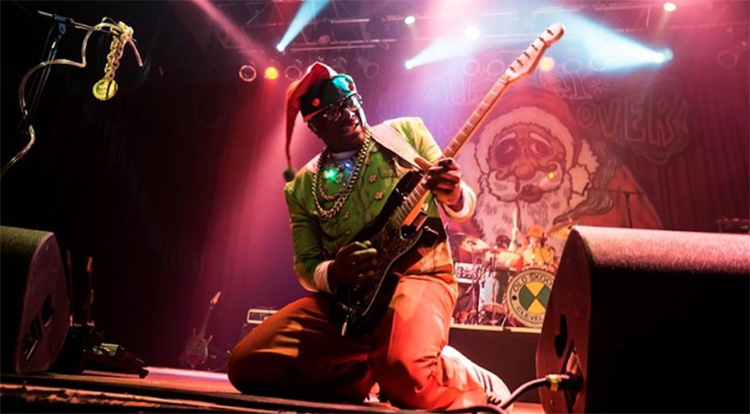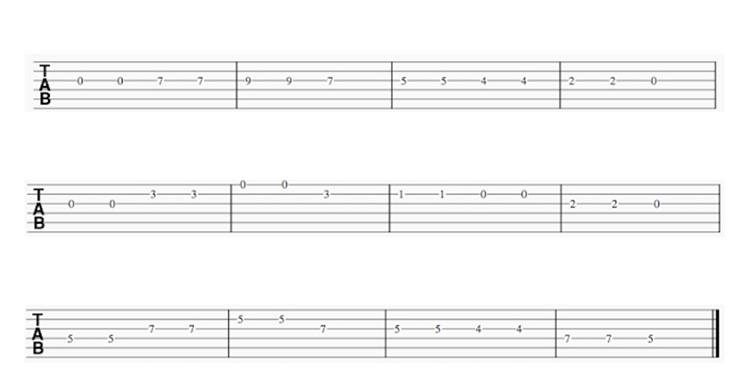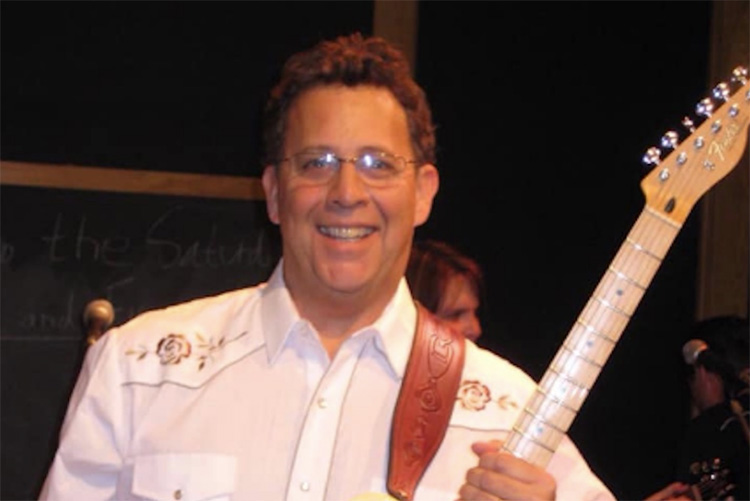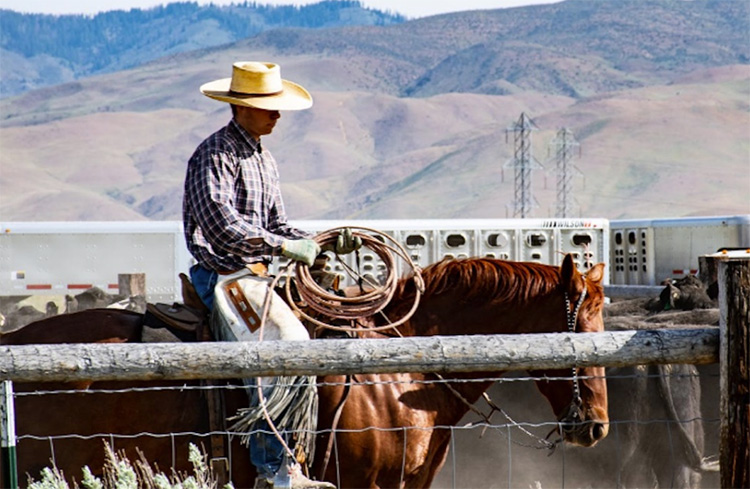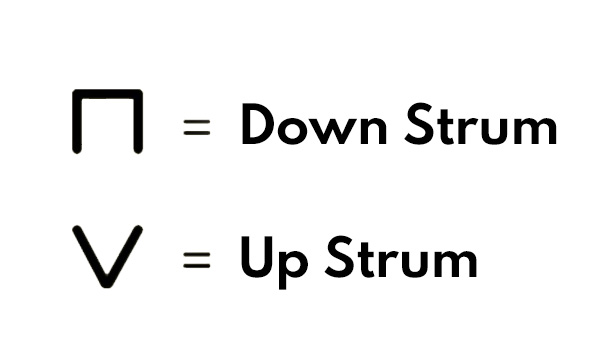Learning how to read tabs is essential for every guitarist – So what are you waiting for? Let’s get to it!
Over 250,000 guitar-learners get our world-class guitar tips & tutorials sent straight to their inbox: Click here to join them
In this free lesson you will learn…
- The secret to reading tabs effectively
- The similarities between tablature and notation
- The difference between melody and harmony
- The limitations of tablature
Want To Learn How To Read Tabs?
If all you wanted to do was learn to play an awesome guitar song, and you went through all the trouble of looking it up online only to find some crazy set of lines with numbers and other indecipherable little marks on them – then you my friend, have entered the world of guitar tablature!
Tablature, or Tab for short, is modified notation that is used frequently for fretted stringed instruments like guitar, bass, banjo, mandolin, and ukulele.
- As we’ll see, Tab is an amazing way to map out what to play on the guitar whether or not you can already read standard notation.
- Sometimes tabs appear in conjunction with standard notation, but your ability to read tablature is totally different from your ability to read standard notation.
- This means that tablature is useful for everyone, and a very popular and common way to express music in written form.
This lesson is going to get you from “I thought tab was something I left open on my web browser” to “I can totally play that guitar solo!”
How to Read Tabs: Basic Layout
To understand how to read tabs, it’s necessary to get the basic layout figured out. It’s simpler than standard notation, but there are some aspects of it that are not exactly intuitive.
How to Read Tabs: the Strings
The first thing to notice is that there is a staff of six horizontal lines running across the page. Those are the strings.
There’s one line for each string of the guitar, but the thing that you need to remember is that the strings are upside down.
- From top to bottom, they go E B G D A E, so unless you are a lefty, those strings do not appear the way they sit on your guitar when you are holding it.
- The simple reason for that is tablature mimics standard notation by having the lowest string lowest on the page.
- In standard notation, the lower you are on the staff, the lower the note. That isn’t a hundred percent true when applied to tablature, but it’s the way tab is laid out.
It’s easy to read once you make that flip.
Download our lead guitar cheat-sheet to make things easier
It's hard to understand which scales work with which keys.
So we created a cheat-sheet! A key and scale-finder that you can use again and again.

Get your personalised guitar-learning plan 🎸
Get a custom guitar-learning plan here: Click here for GuitarMetrics™
World-Class Guitar Courses 🌎
Learn from the world's best guitar educators: Click here for our guitar courses
How to Read Tabs: the Frets
The other main feature of tab is the numbers. They’re just fret numbers! They are not finger numbers, although sometimes fret and finger numbers coincide.
Here, you’ll see numbers all over the lines. Each of those numbers is a single note that you play by putting the most convenient finger on the string indicated at the fret number indicated.
See how sometimes the numbers are right on top of each other and sometimes they’re in a row?
- This also emulates standard notation in that when the numbers are on top of each other, you play those strings at the same time.
- The vertical dotted line running through the tab every once in a while is a bar line.
- If a tab is any good, it has these bar lines to separate the tab into measures – regular repeating groups of beats.
Most of the time, the measures in tab separate the music into groups of four beats, no matter how many notes you’re supposed to play in those four beats.
Some tabs don’t have bar lines, and the lines do not affect the way you are supposed to play the music. More on that later.
How to Read Tabs: Playing a Melody
Tablature is an excellent format for showing you exactly where on the guitar you need to play to get the notes you want.
The notes you want generally come in two forms: melody and harmony.
- Melody is what we think of when we think of how a song goes. The strict rule about melody is that it happens one note at a time.
- More than one note can (and does) happen in music all the time, but anything that is not the melody is considered harmony.
- Another way to think about harmony is that it is all the other notes in the song that are not the melody.
It’s easy to tell them apart in the songs where the melody is sung!
Here is a sparkly little melody for you to try, three ways.
Each example contains the same notes, but they are located in different places on the guitar.
- They’re useful for different purposes: the first example helps you see how the notes move higher and lower on the guitar.
- The second example helps you see how melodies move across the strings on the guitar and where notes overlap on the strings.
The third example shows you how to play a melody without having to deal with any open strings, which means it is easy to put the melody in a different key just by shifting everything up or down.
For example, you can move the melody up three frets by adding 3 to every number you see.
Pro-Tip: When learning how to read tabs, try playing the melodies with a flatpick and with your fingers. It’s good to experiment to see which feels better and more natural. If you are interested in playing melodies on the guitar and you’d like to see where to go next, check out this lesson: One-String Guitar Songs
How to Read Tabs: Playing Harmony
If melody is how the song goes, harmony encompasses all of the other notes happening to support that melody. Harmony happens whenever more than one note is playing at a time.
When figuring out how to read tabs, it’s helpful to know that there are two basic types of harmony playing that show up frequently: chord playing and fingerstyle harmony.
How to Read Tabs: When Chords Show Up
One of the main things I wish someone had told me when I was first learning how to read tabs is that if you see a stack of numbers three or more deep, that symbolizes a chord shape, and it is usually a chord shape that you already know.
Check out this tab and see if you can decode the chords.
To be fair, most tablature exists because the information you need to play a song cannot fit neatly into a chordbox. Chordboxes are a much better way to express chords.
If you would like some support in reading chordboxes, check out this lesson on how to read guitar chords.
How to Read Tabs: Fingerstyle Harmony
One of the main reasons guitar tab exists is to teach fingerstyle guitar.
It makes learning fingerstyle arrangements of songs much easier to figure out, and learning how to read tabs of those arrangements can be straightforward
This kind of harmony tends to have two features: bass notes (or alternating bass notes) and arpeggiated chords.
Huh?
Arpeggiation is just the fancy word for chords that are broken up so that you only play them one note at a time. Here is some tablature expressing an arpeggiated G major chord. Note the fret numbers on the strings and you’ll see the G chord!
Given the popularity of this type of tablature (where the harmony is arranged for fingerstyle and/or mixed in with the melody), it’s worth investigating fingerstyle guitar to learn how to read tabs and then to play them more efficiently.
Check out this really helpful fingerstyle lesson below:
Fingerstyle Guitar Lessons – 5 Easy Ways to Sound Amazing
How To Read Tabs: The Unfortunate Limitations Of Tablature
For all of the great advantages of learning how to read tabs – the certainty of where to go on the neck, the ease of figuring out exactly what you have to do to play the song – there are a couple of things that tablature does not know how to do very well.
Listen For The Rhythm!
Tablature is, by and large, terrible at telling you when to play what it says to play. Some tabs don’t even have bar lines in them!
This is partly the result of tabs being widely available for free on the Internet, where you definitely get what you pay for unless you luck into something as detailed as this:
The above taken from a rather excellent tablature for Simon and Garfunkel’s “April Come She Will.”
Most tablature has bar lines, but a lot of it does not tell you exactly when, within the measure, to play the notes it gives you. It tends to look more like this:
This is also good tab, for Passenger’s “Let Her Go,” but it does not give you an indication of where the beat is, where the measure is, or when to play any of these notes.
- That doesn’t make the tablature wrong, though!
- One major part of figuring out how to read tabs is looking at the notes you are supposed to play and matching them up with your recording of the song.
Then you can use the tab as it was intended to be used – as a tool for figuring out how to play the song.
Which Fingers Am I Supposed to Use?
Another area where tablature is not really designed to help you is figuring out which fingers you should use to play the tab.
It gives you fret numbers, but it does not instruct you on how to get your fretting hand to play the notes.
One way to start to unravel that is to take a look at your tab section by section and look for groupings of notes within two or three frets, like this.
Once you figure out this tab, you’ll know the song, but in the meantime, take a look at these numbers four at a time.
They’re within a fret of each other.
That means that you can play this section of tab four notes at a time, including the open D string, and move your hand down the neck bit by bit.
Learn 12 EASY beginner chords with our popular guide

✅ Stop struggling. Start making music.
✅ Learn beginner-friendly versions of every chord.
This is our most popular guide and it will improve your chord ability quickly! 😎
Get your own personalised guitar-learning plan 🎸
Get a custom guitar-learning plan here: Click here for GuitarMetrics™
World-Class Guitar Courses 🌎
Learn from the world's best guitar educators: Click here for our guitar courses
How to Read Tabs: Other Markings in Tablature
Apart from the fret numbers, you’re going to run across some other markings in tablature. Here is a quick rundown of some of the most common ones.
Up Strum, Down Strum
When there are chords in guitar tablature, or any other kind of music, sometimes it is indicated by down strum and up strum symbols. Many people just use arrows, but there is also this:
Hammer-Ons and Pull-Offs
Hammer-ons and pull-offs are markings that indicate phrasing, which is the term used for how to connect your guitar notes without re-plucking a string.
Phrasing turns the “words” of your notes into meaningful sentences, hence the term “phrasing.”
- A hammer-on, which is exactly what it sounds like (hammer your finger onto the string to make the note sound), is a way to go up in pitch.
- A pull-off (pull your finger a little bit sideways off of the string, so that you are almost plucking the string with your fretting finger) is a way to go down in pitch.
They are frequently abbreviated “h” and “p”.
Here is an example of some tab with hammer-ons and pull-offs.
That’s the intro to “Over the Hills and Far Away” by Led Zeppelin.
It has no bar lines, so it’s hard to tell, but if you practice this little bit of tab, you’ll start to hear the song!
Sliding and Bending
Sliding is pretty self-explanatory. You slide up or down the neck from the first fret indicated to the next fret indicated. It looks like this.
This is the intro to “No Rain” by Blind Melon.
Bending is a little bit trickier. To bend the string, you have to grab it, usually by more than one finger, and pull or push the string itself to change the pitch of the string.
Here is a little string-bend in the intro to “Folsom Prison Blues” by Johnny Cash – a tune that can easily help us learn how to read tabs.
Pro-Tip: Bending strings is not as hard as it seems! Line your fingers up on the string and use your hand strength to bend the string.
Whether you bend “in”, curling your fingers up further, or “out,” straightening your fingers, is a matter of personal preference and sometimes a matter of which string you’re trying to bend and how far.
Putting It All Together
Figuring out how to read tabs can be as frustrating as it is fun!
If you are unsure of the quality of the tab, check out the “authentic tab version” books available on Amazon or your music bookseller for your favorite artists.
Nothing beats the help of a local teacher in decoding tablature.
With private guitar lessons or guitar classes, you can use tabs to learn songs, help yourself learn by ear, and eventually write your own tabs! Keep on keeping on, guitar players!
What Type of Guitarist Are You?
Take our 60-second quiz & get your results: Take The Quiz
Join the world's best online guitar school 🌎
- Get your own personalised guitar learning plan (customised just for YOU).
- World-class online guitar courses. Learn at your own pace.
- Community Campus & Learning Forum - A friendly community! Connect with our team & students. 😊
- Beginner Song library with chordsheets, tabs and tips. (Songs suitable for all levels!)
- Regular live streams, seminars and Q&A sessions - Learn from world-class guitar educators. Get all your questions answered!
Click here to learn more about National Guitar Academy membership 
Cool Guitar T-shirts 😎
Look cooler! Check out our merch: Click here to see our merch store
Want free guitar tips and video lessons delivered to your inbox?
Join over 250,000 other guitar learners and subscribe to our guitar-tips-by-email service. (It's free.)
We'll send you a series of lessons that will move you to the next level of your guitar journey.
Learn how everything fits together quickly, easily and effectively. We share ninja tips (for instant fun!) but also timeless fundamentals that will deepen your understanding.

Popular Lessons
How To Learn Guitar: An 11-Step Programme For Beginners
How To Choose The Perfect Beginner Guitar
More Cool Guitar Stuff
Learn about National Guitar Academy: About Us
Visit our YouTube channel for fun guitar videos.
Join us on Facebook for daily guitar tips.
Listen to our Learn Guitar Podcast for rapid guitar progress.
Check out our free chord lessons.
Get our best guitar tips & videos
Where should we send it?
Where should we send it?
Get our best guitar tips & videos

